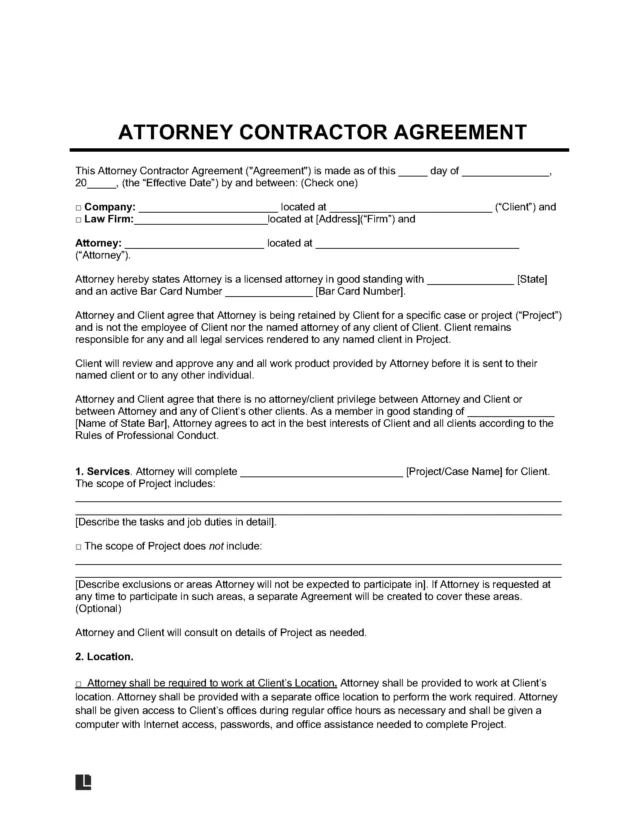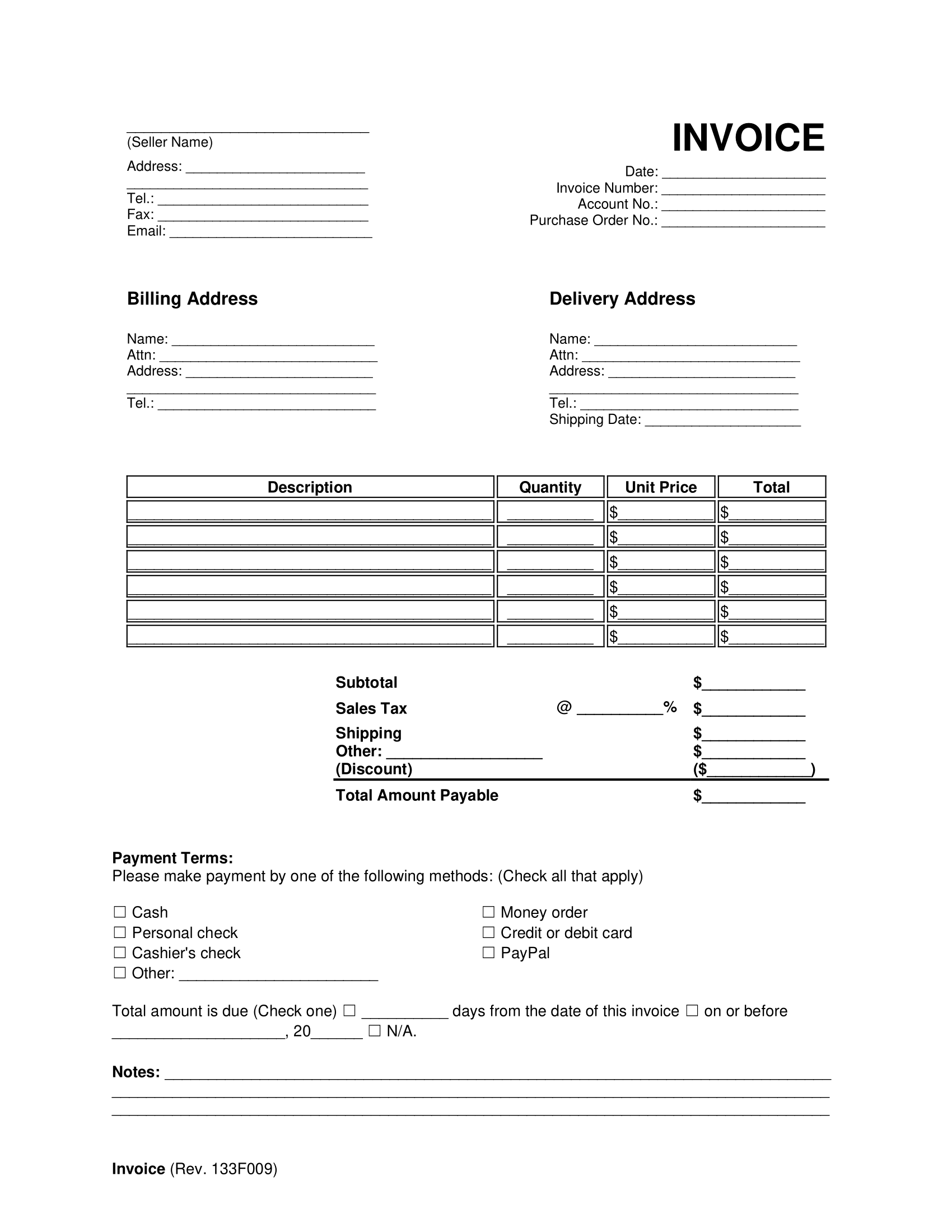What Is a Legal Invoice?
A lawyer/attorney legal invoice is a document that bills a client for the legal services you provided to them. It communicates the services that were rendered and when the client should pay, which can help an independent lawyer or a law firm collect payments from clients in a timely manner.
Why Use a Legal Invoice?
Using a legal invoice can streamline the billing process, allowing you to focus on other aspects of your legal work. Some other benefits of using a legal invoice include the following:
- You can reuse invoice templates for different clients, saving you time during the invoicing process.
- You can create and maintain a professional reputation by using consistent documentation for payments.
- You can streamline communication with clients about the services they’re being charged for.
When Should You Send a Legal Invoice?
When you send an invoice depends on the nature of your legal services. Some attorneys send invoices to clients to request payment upfront, while others may collect regular retainer payments on a recurring basis.
What to Include in a Legal Invoice
As you’re creating your legal invoice, ensure to include the following elements:
- Client details: Indicate the client’s name, address, and contact information.
- Lawyer’s information: Include the firm’s name and address, the lawyer providing services, and the contact information for the appropriate parties.
- Invoice date: Specify when you’re issuing the invoice.
- Billing period: Include the start and end date for the billing period.
- Description of legal services: A client may come to an attorney with multiple legal matters, so each invoice for legal services should specify the matter being addressed.
- Hours worked: Even if you are operating on a contingency basis, logging hours is crucial for legal invoicing.
- Services provided: Each hourly line item should indicate the work performed at that time.
- Retainer balance: If the client is on retainer, show how much has been used and the remaining balance.
- Installment schedule: If the client is paying their bill in installments, include the total amount, payments to date, and remaining balance.
How to Bill for Your Legal Services
Here’s an overview of how to bill for your legal services:
Step 1 – Download a Lawyer/Attorney Invoice Template
A quality lawyer/ attorney invoice template can help you maintain a consistent, professional demeanor. When clients know what to expect, there is less potential for misunderstandings or conflicts that could harm the attorney-client relationship.
A standardized legal invoice template also reduces the amount of time you might spend creating an invoice from scratch for every client.
Step 2 – Add the Invoice Date and Unique Invoice Number
Tracking invoices is critical for both the attorney and their client. A unique invoice number lets you and your client track whether payment has been made. Dating an invoice helps the client know when their payment is due. A clear invoice date also allows you to calculate late fees and interest when necessary.
Step 3 – Enter Client and Lawyer Information
You can populate your invoice template with your law firm’s name and address and tailor the details to the specific attorney working on the matter.
Your client’s name, address, phone number, email, and other contact information should be clearly delineated in the invoice. This helps you avoid questions about who is responsible for the legal charges denoted in the invoice.
Step 4 – Note the Legal Matter Being Addressed
A legal contract should already be in place by the time you begin invoicing for legal services. Your invoice should still outline the legal matter being addressed, including case numbers, claim numbers, involved parties, and other identifying information.
Step 5 – Include a Log of Hours and Expenses
Whether you’re on a retainer agreement, hourly arrangement, or contingency case, you should always maintain a log of hours and expenses. Including this information in your periodic invoices provides a clear explanation of hourly charges. It also shows retainer and contingency clients that you’re actively working on their cases.
Step 6 – Indicate the Billing Method
A lawyer may provide legal services on a contingency fee, flat fee, retainer, or hourly basis. A lawyer or attorney invoice needs to reflect the correct billing method. Installment plans or progress payments should be clearly outlined, with the total owed, amount paid to date, and remaining balance.
Step 7 – Indicate Accepted Payment Methods
Make sure your client knows how to pay the invoice. Indicate the accepted payment methods, whether by check, money order, online portal, or payment application. Note addresses where payments can be mailed or dropped off in person.
Step 8 – Advise of Penalties for Nonpayment
Timely payment is crucial for keeping your legal business afloat. Your clients should know that if they fail to make payment on time, there will be penalties. Include details about late fees and interest. You may also inform them that you may be unable to continue providing legal services if they don’t make payments on time.
Invoicing Tips for Lawyers
Make the invoicing process easier and preserve a good attorney-client relationship by following these tips:
Create a Clear Legal Contract
Your independent contractor agreement or other contract for legal services provides all the crucial details relevant to the scope of work and payment expectations. By establishing your terms up front, you reduce the potential for miscommunication and nonpayment later in your relationship.
Simplify Payments
Consider offering more payment options for clients. Payment technology, such as online portals and payment apps, can streamline the process and make payment seem less daunting for the customer. You may also consider accepting payments over the phone or letting clients give you checks in person at your office.
Be as Transparent as Possible
Payments on legal invoices may be unnecessarily delayed if the client has questions about your charges. Avoid these delays by providing sufficient detail in your invoices. Set up clear payment structures and avoid complex legal terminology that could confuse the client.
Send Invoice Reminders
Use an automated system to send a friendly reminder to clients prior to the due date. With a reminder, a client may be more likely to pay on time, which can prevent you from needing to pursue late payments and assess penalties.
Legal Invoice Sample
Download a legal invoice template as a PDF or Word file below.




